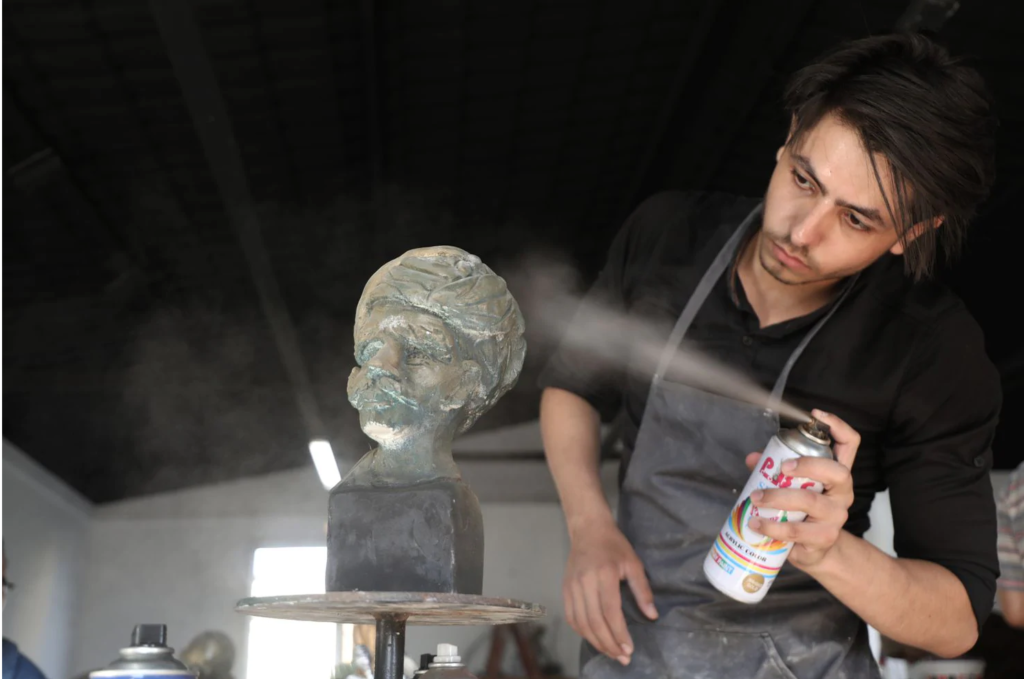
Nimer Qeeq, 23, a student in a Shababeek sculpture workshop. (Loay Ayyoub/For The Washington Post)
By James McAuley and Hazem Balousha
September 25
GAZA CITY — On the top floor of a run-down studio, the young sculptors were scraping away at plaster bas-reliefs, in many cases re-creating Western masterpieces they may never see. Nimer Qeeq, a 23-year-old hipster in tight black jeans, said Michelangelo’s “Pietà” would be the first thing he’d aim to see if he ever leaves the 25-mile-long strip of land that has circumscribed his life. “The details of that statue,” he said, “how Mary holds Jesus, the details on her arm — it’s really perfect. ”Jamila Sawalah, 22, dreams of seeing a van Gogh. “The violent nature of the brushstrokes — I love that style, and I try to do the same.” She dashed paint onto her sculpture of a couple in a passionate embrace. It is often said that art is a means of escape. But in Gaza — an overcrowded and squalid enclave that residents cannot leave without great difficulty — there is no escape. Art here is a means of weathering an increasingly oppressive reality, of learning to find, or create, beauty in the most hostile environments.
